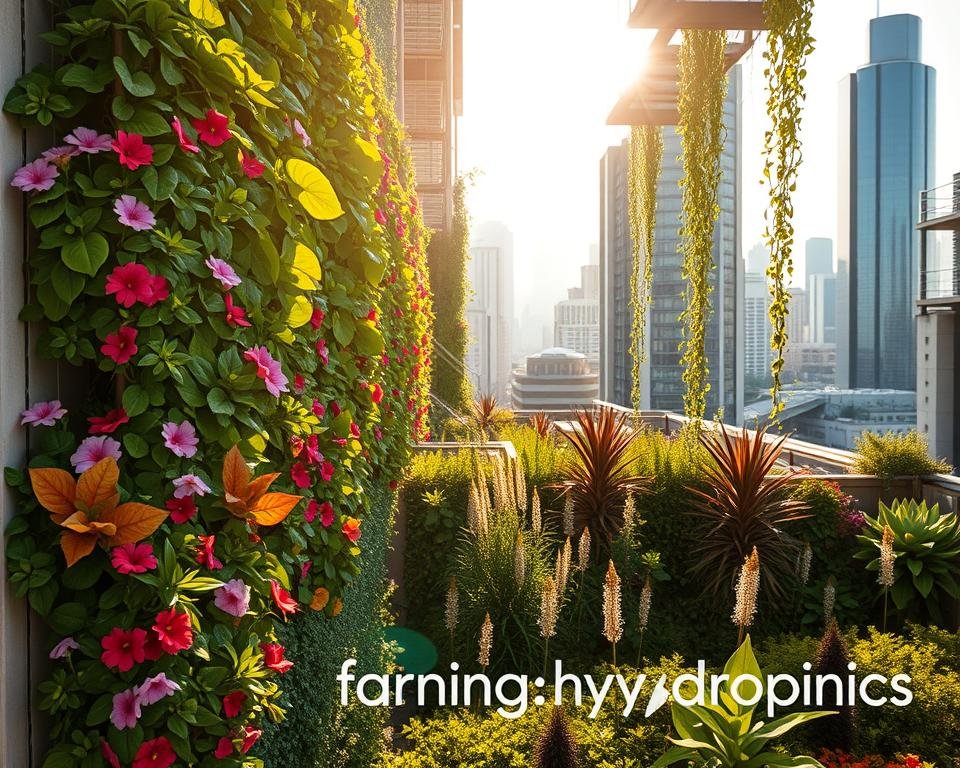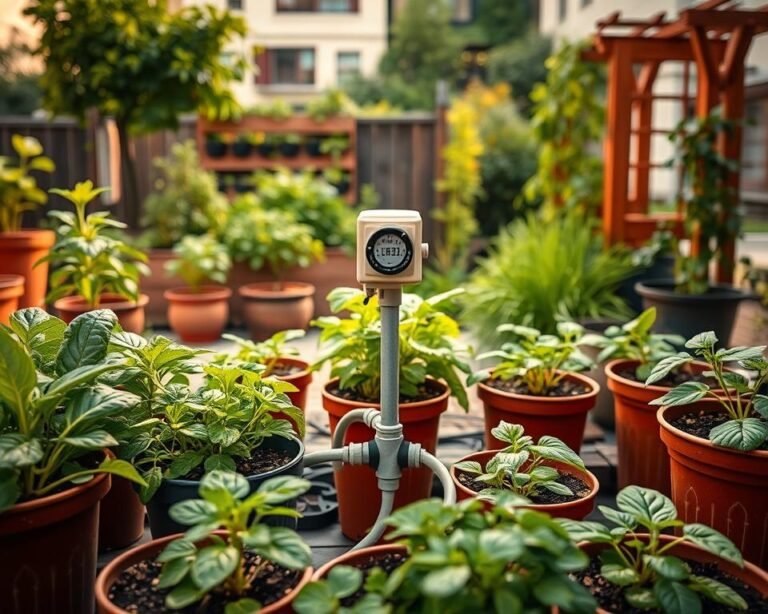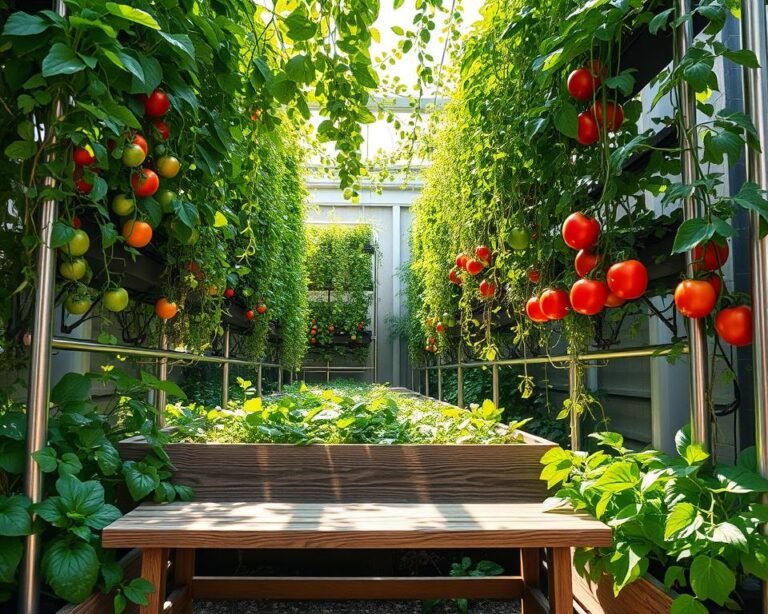Climate Adaptation Strategies for Resilient Vertical Gardens
As temperatures rise and weather patterns become more unpredictable, your garden needs new strategies. Climate adaptation is now a must for gardeners wanting to create spaces that can handle environmental challenges.
Vertical gardening is a strong solution for making the most of small spaces while building resilience. By growing plants up, you can turn walls, fences, and tiny urban areas into green spaces that adapt to changing weather. Innovative vertical garden techniques help garden in a world where climate is uncertain.
The future of gardening is about working with nature, not against it. Vertical gardens are a smart way to create green spaces that are efficient with space and help fight climate change.
Key Takeaways
- Vertical gardening increases planting area by up to 100% in limited spaces
- Climate adaptation strategies are crucial for garden resilience
- Native plants require up to 50% less water than non-native varieties
- Microclimates can extend growing seasons in challenging conditions
- Sustainable gardening practices protect both plants and environment
Understanding Climate-Resilient Plant Selection
Creating a successful vertical garden means picking the right plants. These plants must be able to handle tough weather. This is key for your garden’s survival.
Recent studies on Marchantia polymorpha show how plants adapt. They develop special traits to survive different temperatures. This research shows how important it is to understand plant resilience.
“Adaptation is not just survival, but strategic evolution in response to environmental challenges.” – Climate Research Institute
When planning your vertical garden, keep these tips in mind:
- Choose native species that fit your local climate well.
- Pick plants that need little water.
- Find plants that can handle temperature changes.
Native and Adaptive Species
Native plants are great for your garden. They’re made to thrive in your area, needing less care and water. The USDA Plant Hardiness Zone Map shows how climate changes affect us. So, picking native plants is more important than ever.
Drought-Tolerant Varieties
Look for plants that use little water. Succulents, herbs, and plants from the Mediterranean like lavender are good choices. They help your garden stay healthy when it’s dry.
Heat-Resistant Plants
With the weather getting warmer, it’s crucial to choose plants that can handle heat. These plants are made to stand up to sunlight and high temperatures. They keep your garden looking good all year.
Water Conservation Systems for Vertical Gardens
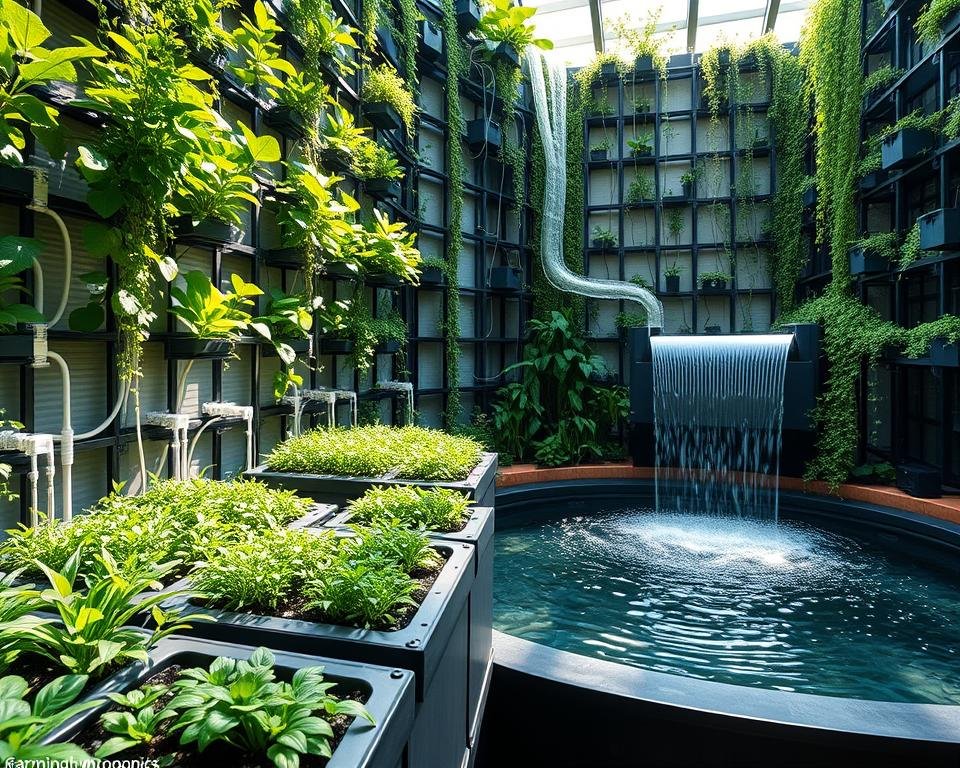
Managing water is key in vertical gardening. It changes how you care for plants in small spaces. With smart water systems, your vertical garden will grow strong, even in tough weather.
New irrigation methods are vital for vertical gardens. Drip irrigation systems save a lot of water by watering roots directly. This can cut water use by 70%, perfect for planning for the future.
- Rainwater Harvesting: Collect and store rainwater for garden irrigation
- Drip Irrigation: Minimize water waste through targeted watering
- Mulching: Retain soil moisture and regulate temperature
Think about using self-watering planters and timers for better watering. These can save 20% on water and keep plants moist. Automatic systems adjust to your garden’s needs, helping save water over time.
Using these water-saving ideas will cut down water use. It also makes your vertical garden stronger and greener.
Climate Adaptation Through Soil Management
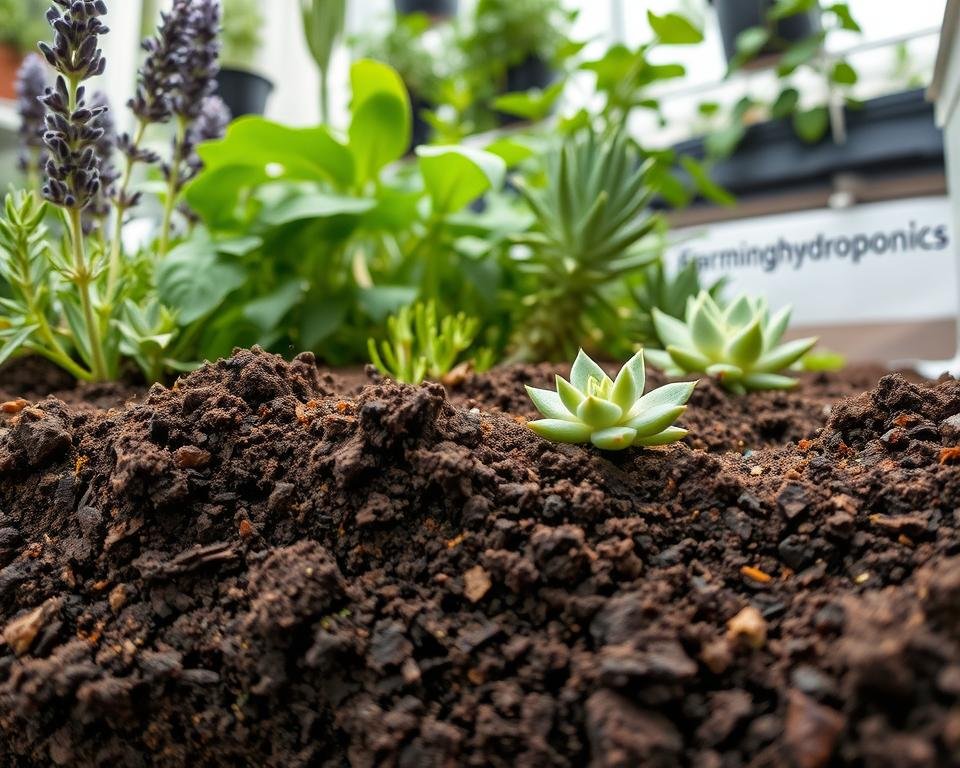
Managing soil well is key for strong vertical gardens that face climate changes. Your soil plan affects plant health, water use, and garden life. Smart soil methods can make your garden strong against environmental shifts.
Composting and Organic Matter
Composting boosts soil quality. Adding compost improves soil’s structure and nutrients. Healthy soils with lots of organic matter can:
- Keep moisture up to 20% longer in dry times
- Soak up and drain water better in heavy rain
- Lessen soil erosion risks
- Support a diverse soil ecosystem that’s more resilient to stress
Mulching Techniques
Mulching is vital for vertical gardens. Smart mulching shields soil from extreme temperatures and saves moisture. It covers soil, cutting down water loss and keeping soil temperatures steady.
Soil Moisture Retention
Soil moisture is crucial for your garden. Techniques like variable deficit irrigation can cut water use by up to 29.44% without harming plants. Your soil care should include:
- Choosing water-saving soil additives
- Planting cover crops
- Using natural materials to hold water
- Checking soil moisture often
By focusing on these soil care steps, you’ll build a strong, lasting vertical garden that can handle climate changes.
Vertical Garden Infrastructure Design
Building a strong vertical garden needs careful planning. It should mix nature-based solutions with ways to adapt to climate change. Your design must fit the local weather, using materials and designs that can handle extreme weather.
Think about how your garden will handle heat and cold. Use shade structures like pergolas to protect plants from too much sun. Also, placing your garden near buildings or trees can create a better environment for plants.
Drainage is key in vertical garden design. Good water management keeps plants healthy during rainy days. Your design should be easy to maintain and change, making your garden sustainable and resilient in cities.
Today, vertical gardens come in many designs. You can choose from simple to complex systems, like mats and hanging pockets. The right design makes your garden strong and successful in tough city environments.

